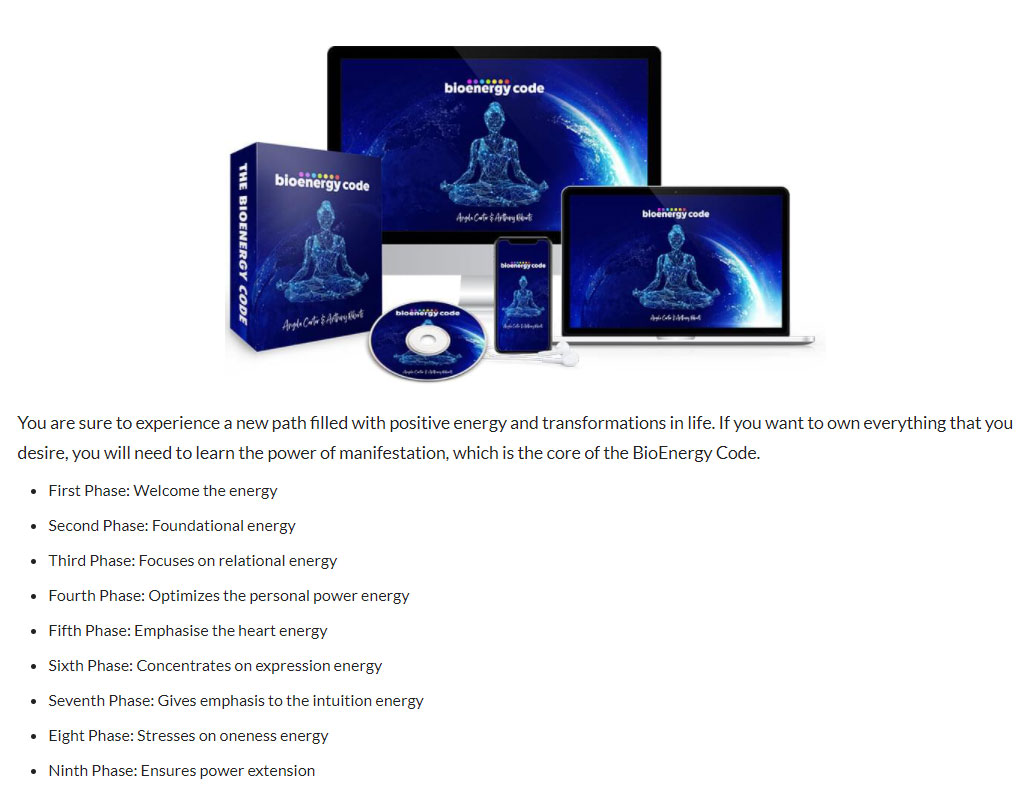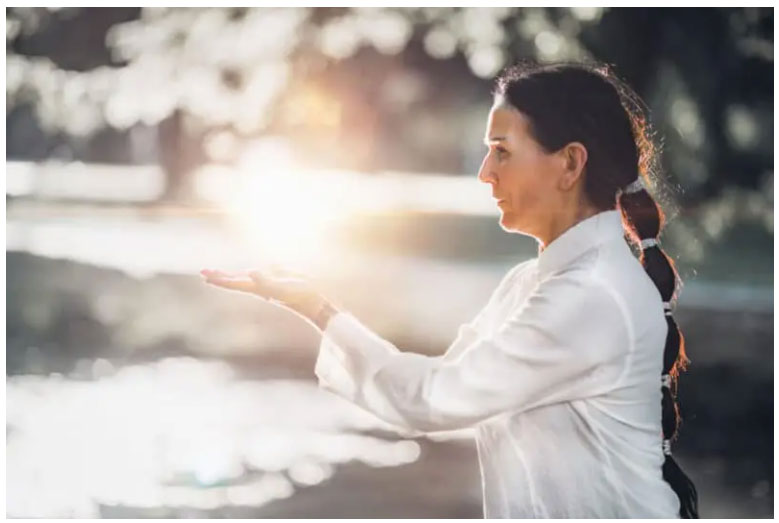What is Tai-Chi
An ancestral Chinese art, tai chi differs from other types of martial arts by its principles and practices. This kind of soft gymnastics uses meditation and movements. In addition to being a sporting practice, tai-chi is a life discipline that has many health benefits. Explanations.
Tai chi
Tai Chi is a slow Chinese martial art. It takes the form of a soft energetic gymnastics that differs from other martial arts that are a little hard and dry. It requires fluid and supple movements, performed with slowness. It aspires to calm and total concentration. This is why it is also considered "meditation in movement".
Also called "shadow boxing" or "boxing in the vacuum", tai chi has slight similarities to boxing techniques. Indeed, in practice, it may seem that the practitioner is fighting against an invisible or imaginary opponent. In some forms of tai chi, the practitioner may have a weapon.
The legend of tai chi
According to legend, tai chi appeared as early as 600-700 BC, around the beginning of the Ming Dynasty. It is a Taoist monk who would be at the origin of this practice. Expert in martial arts, the monk Zhang Sanfeng who lived in the Shaolin Temple went one day to meditate on Mount Wudang. It was then that he saw a crane trying to fight a snake. The bird attacked the snakes with straight and hard pecks. The snake defended itself by dodging with smooth and fluid movements and then quickly counterattacked. This demonstration made him realize that the uninterrupted, smooth and constant movements were smarter than the hard and jerky blows.
He also understood that using force and hardness only led to failure compared to suppleness and flexibility. This is how Master Zhang SanFeng created the discipline of Tai-chi Chuan. It is only later, under the Qing dynasty that Tai-chi chuan took an important place and was recognized by the masters of the time, thanks in particular to Wang Zongyue who would be recognized as the main founder of this discipline.
The evolution of tai chi
On the other hand, tai chi was already mentioned in the books of Lao Tzu, where it referred to an absent opponent. Later, tai-chi chuan divided into several forms. There is now the Chen style tai-chi chuan, the initial art; the Yang style tai-chi chuan, the most widespread; the Wu-Chen style tai-chi chuan and many others.
The forms of tai-chi differ according to the masters. In all the cases, it is based on an interior work, starting from technical sequences, supple and flexible movements, the continuity and slowness of the movements.
The principles of tai chi
Tai Chi is considered to be a dance mixed with a fight. It is a martial art called internal because it makes work the vital energy "the IQ" contrary to hard martial arts like Kung-Fu which makes work the force. The movements are drawn from the center of the body, at the seat of the vital energy. It is based on the chakra points (these are the energy points of the body).
The practice of tai-chi consists in making slow and loose movements. It mixes concentration, breathing and slowness of the sequences. The practitioner follows with slow movements, without abrupt interruption. During the training, the practitioner alternates with deep and slow breathing. Its principle also consists in making balanced and harmonious movements.
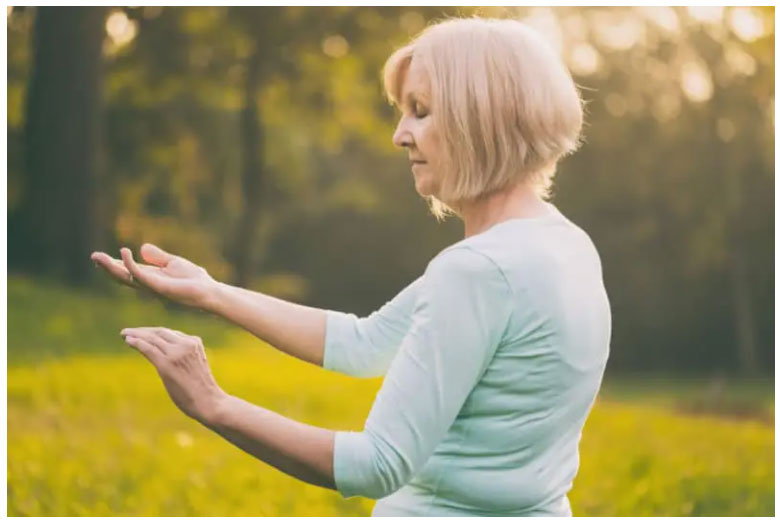
The 10 Essential Principles of Tai Chi
Whether for Tai Chi Chuan Yang or Tai Chi Chen, Tai Chi is based on 10 essential principles, which contain the basic rules of the martial art. These are the 10 fundamental principles that were put in place by the founding master Zhang Sanfeng.
1- Emptying the Head, the Mind and Filling the Spirit with Energy
This principle consists in emptying the mind and the head, starting from the neck. To do this, the neck must be held high in order to push the energy from the center of the body upwards.
2- Release the Chest and Raise the Back Upwards
Relaxing the chest allows the breath to come down for a deep breath. It also allows the back to be stretched upwards.
3- Relaxing The Waist
Relaxing the waist allows the movements that depend on it to be performed. It also allows the feet to remain stable.
4- Making Empty and Full
Through the posture, each practitioner must distinguish the "full" from the "empty". This allows, among other things, to be stable, but also flexible in all movements.
5- Releasing Shoulders and Elbows
Releasing these parts allows the movements to be performed slowly, as required.
6- Using Intention And Not Force
The discipline of Tai Chi is based on intention, not strength. The use of force is somehow forbidden.
7- Synchronizing The Whole Body
The coordination of the upper and lower parts of the body helps to find balance.
8- Harmonizing the inside and the outside
This creates a relationship between internal and external parties in order to create balance.
9- Practicing Continuity
The movements must be performed in continuity, without interruption or abrupt movements.
10- Making Calm Movements
Tai Chi is based on quiet movements, calm without jostling. The tranquility of the movement translates that there is immobility inside.
Weapons in Tai Chi
According to traditional tai-chi yang, there are weapons that practitioners use. In the form of sword or saber, the weapon is used to extend the body and allow a better self-realization. It makes it possible to prolong the energy of the body (the IQ) until the end of the blade. There are two types of weapons:
- The short weapon: in the form of a 67-movement sword and a 13-edged sword.
- The long weapon: in the form of a spear or stick with 13 sequences.
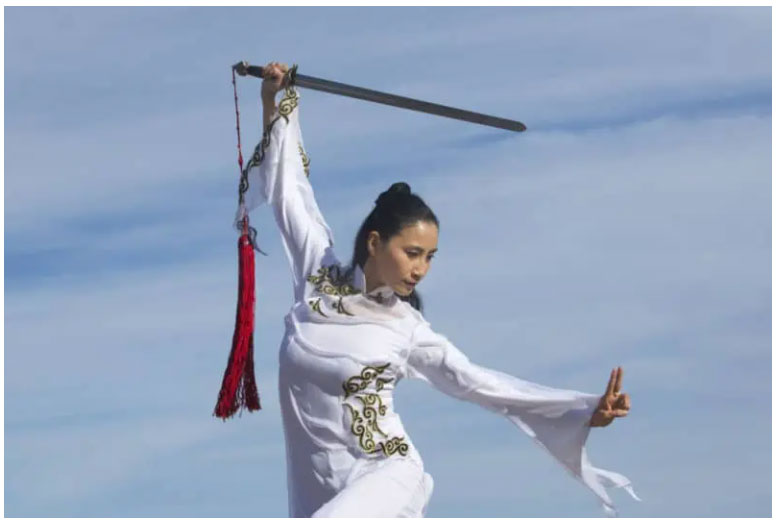
Tai Chi as medicine
Tai Chi is part of Traditional Chinese Medicine or TCM. It forms with Qi Gong, one of the 5 branches of this practice. The other 4 branches are acupuncture, Chinese dietetics, herbal medicine, and Tui Na massage. For this reason, the practice of Tai-Chi is recommended to preserve health, but also to help people suffering from illness to live better, to heal better. Tai Chi as a traditional medicine has many benefits for the body and mind. It aims to maintain harmony between the energy inside the body, as well as between the body and other external elements. According to TCM, health is linked to the body's ability to remain dynamic in all circumstances to face external aggressions. For this balance to be maintained, harmony must be found in every organ of the body. Tai Chi therefore helps to maintain this harmony in every organ of the body.
What are the benefits of tai chi?
Tai Chi is an art that benefits the body, mind, soul and human energy. As such, it offers many health benefits, whether it is for physical, mental or emotional health.
It fights against musculoskeletal diseases
The regular practice of tai chi has many virtues on the body and on energy. First of all, thanks to the progressive detriments, this art improves the suppleness and flexibility of the body. Indeed, tai-chi stimulates the muscular, sensory, neuromuscular or musculoskeletal systems. Thus, tai chi relieves and prevents ailments such as osteoarthritis, lumbago, fibromyalgia, polyarthritis.
It reduces the risk of cardiovascular and pulmonary diseases
Practiced in moderation, tai chi also has cardiovascular health benefits. By making the body work, it stimulates the heart and helps support the effort. It reduces cardiovascular risks such as hyperlipidemia and hypertension. In addition, tai chi also promotes better blood circulation in the body. The work of energy improves the pumping of blood through the heart. Practiced twice a week, it helps to reduce blood pressure. In addition, it also improves lung health.
It improves balance and coordination
The practice of tai chi evokes balance and coordination of movements and body. The game of transferring weight from one foot to the other improves the sense of balance. The harmonization of movements improves coordination. The balance of the mind and the coordination of the body allow to understand each step of daily life.
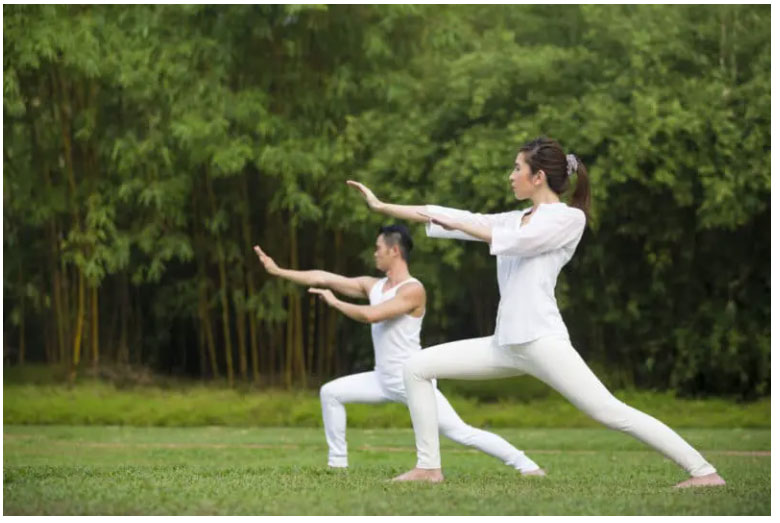
It makes you feel good psychologically
The art of Tai Chi is based on mental concentration, body balance, muscle relaxation and deep breathing. This helps to improve psychological health and prevent disorders. Thus, tai-chi proves to be effective to feel better in one's mind. It is recommended to fight against depression, anxiety, stress and pressure. It also helps to manage mood disorders (anger, grief, sadness, etc.). In addition, it helps improve self-esteem.
It prevents diseases of the elderly
The practice of tai chi can improve balance and reduce the risk of falls that usually occur in the elderly. By acting on the mind, it also reduces the fear of falling.
In addition, tai chi calls upon concentration and memory. Memorizing movements and performing them requires a real effort of attention. Thus, it could be beneficial for the elderly. It can fight against Alzheimer's and Parkinson's disease thanks to the movements.
It improves the condition of people with cancer
The practice of tai chi is recommended by doctors for people with cancer. It allows them to better tolerate the disease as well as the side effects of the treatment. According to studies carried out on cancer patients, tai-chi has beneficial effects on fatigue, immune function and cortisol (stress hormone) levels. It allows you to feel better and to feel an inner well-being despite the illness. In short, it can improve the quality of life of people with cancer.
It promotes sleep
Tai Chi also improves sleep in people who suffer from sleep disorders or are often prone to repeated insomnia. Concentration and meditation help clear the mind and promote sleep. It is especially recommended for elderly people who have trouble sleeping. Studies have shown that a person who practices regularly, 2 to 3 times a week, can get a full night's sleep without interruption. It also allows one to fall asleep very quickly.
It strengthens the muscular system
Just as it fights back pain, musculoskeletal diseases, tai chi helps to strengthen muscles. The coordination of movements, slow movements and postures improve the muscle and avoid muscle tears or tendon problems. That's why it helps to fight arthrosis, lumbago, etc.
It stimulates memory
Whether for the elderly or for children, tai chi helps to improve the ability to remember. Through the body's coordination of movement, balance and energy, tai chi helps to concentrate and therefore helps to preserve memory. It is a good practice especially for children or teenagers in exam class or for children who have concentration problems. For the elderly, it helps to work the memory and the mind after the end of active life.
It improves the functional capacities of women
Women can also enjoy the benefits of tai chi. These benefits are especially for women who have previously had breast cancer. According to several studies, it would be an effective psychological aid that allows women to recover more quickly after cancer treatment. Combined with a walking session, tai chi can quickly improve self-esteem, self-confidence and motivation, leading to a quick and less painful recovery.
Conclusion
Tai Chi is a practice suitable for all ages. Children, adults and seniors can practice it. This art requires little effort. If you wish to take advantage of its benefits, practicing tai-chi 2 to 3 times a week will only be beneficial for you.
